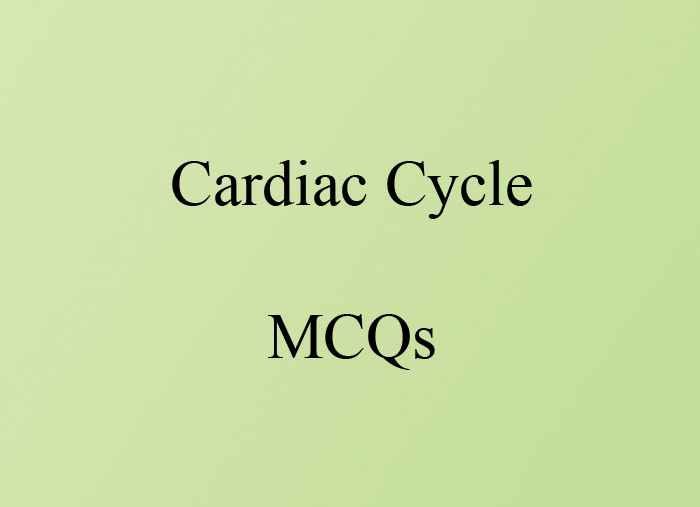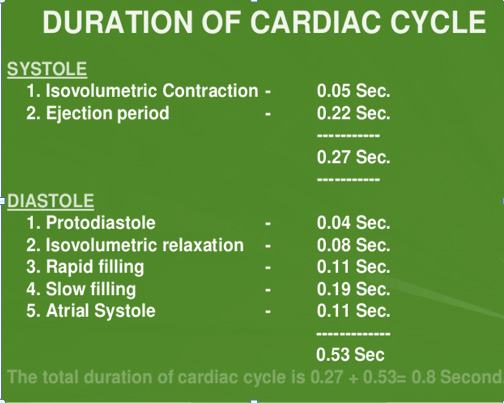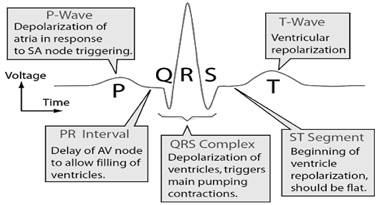- NEED HELP? CALL US NOW
- +919995411505
- [email protected]

A. blood ejected from the ventricles to the body
B. blood ejected from atria to the ventricles
C. events associated with each heart beat
D. event associated with each heart rate
2. for how long is the cardiac cycle, if the heart rate is 75 beats/min?
A. 0.7 sec
B. 0.8 sec
C 0.5 sec
D. 0.4 sec
3. Which event is associated with cardiac cycle?
A. atrial systole
B. ventricular systole
C. relaxation period
D. all of the above
4. The atrial depolarization is marked by which wave on the ECG?
A. P wave
B. QRS complex
C. T wave
D. U wave
5. Match the following
A. cardiac cycle 1. 0.3 SEC
B. atrial contraction 2. 0.8 SEC
C. ventricular contraction 3. 0.1 SEC
D. ventricular relaxation 4. 0.4 SEC
6 Name the three phases of cardiac cycle in the order ____________
a) early diastole, mid-to-late diastole, ventricular systole
b) ventricular systole, mid-to-late diastole, early diastole
c) mid-to-late diastole, Ventricular systole, early diastole
d) early diastole, Ventricular systole, mid-to-late diastole
7. What is the time period for ventricular systole?
A. 0.3 sec
B. 0.1 sec
3. 0.4 sec
D. 0.5 sec
8. Which of the following statement is true?
A. Blood flows from lower pressure areas to higher pressure areas
B. EDV is about 140ml for heart rate of 75beats/min
C. left ventricle crosses pressure of 80mmHg to open the aorta
D. ventricular ejection is for 0.005 sec
9. Why the relaxation period is longer than contraction period?
A. more time for the cardiac muscles to relax before contraction
B. no specific reason to it
C. so that more forceful is next contraction
D. both A and C
10. What is the accurate formula of stroke volume?
A. EDV+ESV
B. EDV*ESV
C. ESV-EDV
D. none of the above
ANSWERS:-
1. C
The cardiac cycle is the performance of the human heart from the beginning of one heartbeat to the beginning of the next. It consists of two periods: one during which the heart muscle relaxes and refills with blood, called diastole, following a period of robust contraction and pumping of blood, dubbed systole.
2. B
Healthy heart rate is of 70 to 75 beats per minute, each cardiac cycle, or heartbeat, takes about 0.8 seconds to complete the cycle

4. A

5. A – 2 B – 3 C – 1 D – 4
6. 6. C
Every beat of the heart involves 3 major stages. They are mid-to-late diastole, Ventricular systole, Early diastole.
7. A
Ventricular systole, where ventricles contract and eject blood into large arteries, lasts 0.3 seconds. Atrial and ventricular diastole, where blood from large veins flows into atria and ventricles, lasts about 0.4 seconds.
8. C
When the left ventricle crosses the pressure of 80mmHg and the right ventricle crosses the pressure of 20mmHg; both the aorta and pulmonary trunk opens. This period is known as ventricular ejection and is for 0.25 sec.
9. Both A and C
The period of relaxation is called diastole. The period of contraction is called systole. Diastole is the longer of the two phases so that the heart can rest between contractions.
10. D




